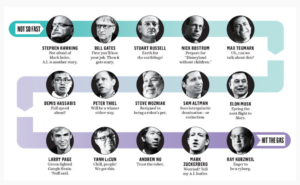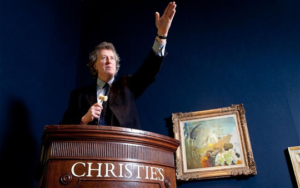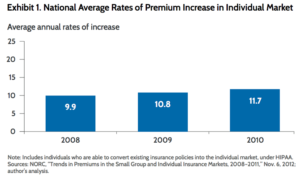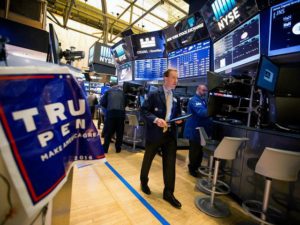“Hey Alexa, turn on the living room lights.” This commanding sentence has become the norm in thousands of households across the country. Alexa, Amazon’s voice-based artificial intelligence device, is used to perform daily tasks in a hands-free manner – and this is just the beginning. Artificial intelligence is slowly but surely being integrated into people’s everyday lives. Not only is this tech phenomenon finding its way into our homes, it is also gaining traction in the military sphere and will continue to take root in the coming years. With that being said, does the future of warfare solely belong to the machines? What are the economic consequences of incorporating similar hands-free devices into a war zone? It is important to look closely at the integration of artificial intelligence into the traditionally rigid institution that is the United States military and weigh the economic effects. The amount of funding and the number of jobs that will be impacted due to a deeper implementation of the technology into the military will evolve with time, but let’s examine the current impact.
Considering the current trajectory of funding towards the advancement in artificial intelligence in the United States military, one would think all of the focus is on funding and creating the next machine army. According to DARPA, the Defense Advanced Research Projects Agency, “the President’s FY2018 budget request for DARPA is $3.17 billion and the FY2017 budget request was $2.97 billion.” The attention the federal government is getting for its investment in artificial intelligence for defense purposes is both positive and negative. Supporters feel it is a must to stay ahead of the curb in warfare, but it seems alarming to many who are unaware of what artificial intelligence actually is and what its involvement in the military will look like. Artificial intelligence is changing the way we approach problems in this world, as well as changing the way we fight. When the general public reads, “Artificial intelligence in the military,” they assume robot soldiers, but that is not necessarily the case. Their ignorance is heightened by Silicon Valley giants who publically speak out about implementing artificial intelligence into the defense industry. According to BBC News, Elon Musk, Stephen Hawking and 998 other technology experts, scientists and researchers, mostly of Silicon Valley, wrote a letter that cautioned the use of artificial intelligence in a military capacity. This pushback from those who seem to be the leaders of innovation, in a general sense, created a stigma and fear around the employment of artificial intelligence into military strategy.
Military officials tend to disagree with the leaders in Silicon Valley. I asked Col. George Haynes, head of the Air Tactical Assault Group and Cyber Group Commander at Berry Field National Guard Base in Nashville, TN, his thoughts on the role of artificial intelligence in the military. He answered, “I would project that artificial intelligence would be pushed to the boundary to accumulate data, provide firing options, and to provide constant courses of action for destroying targets. However, the ‘trigger’ to launch such weapons will likely stay with a human being sending the command.” He also emphasized that, “machines will not take over, but, politically, organizations (military or civilian) will leverage artificial intelligence, but, it will not negate human interaction. As a result, with all technologies constantly evolving, artificial intelligence will become a force multiplier and a tool that will be used to meet national policy.” With military leaders on board, like Col. Haynes, artificial intelligence is inevitably the future of warfare. With that being said, what is the economic effect on military jobs?
According to the Department of Defense, coming in at “one-third of the DoD budget, military pay and benefits are, and will likely always be, the single largest expense category for the Department.” The Department also stated, “people are the Department’s most valuable asset, but DoD must continually balance these requirements with other investments that are critical to achieving the Department’s strategic goals.” With manpower being a main focus of the current military, it is important to investigate how much of the budget will be shifted away from military personnel to machines. According to The Fiscal Times, “each soldier in Afghanistan costs the Pentagon roughly $850,000 per year.” In opposition to that figure the report also found “the TALON robot—a small rover that can be outfitted with weapons, costs $230,000.” It is cheaper to fund a robot than the sum of all the expenses necessary to maintain a live, full-time soldier. This figure does not take into account children outside of the spouse.
Although these figures seem daunting for military personnel, there will not be much to worry about. Col. George Haynes weighed in on this fear by stating, “artificial intelligence will provide an avenue for aggressively identifying and projecting problems, solutions, and costs. However, I would not expect a decrease or increase in overall jobs due to an artificial intelligence effect. I also interviewed Col Vince Franklin, Chief of Staff and Commander of the 119th Cyber Operations Squadron in Alcoa, Tennessee, about the effect artificial intelligence will have on military jobs and he added, “technology has significantly reduced the human footprint in the military. That trend will continue but as for artificial intelligence replacing humans on weapon systems, I do not see the US military allowing artificial intelligence to actively engage the enemy without a human in the loop.”
For the military, technology should always allow repurposing of manpower for the areas that we are constantly low in numbers like front lines, underwater and in the air. In addition, artificial intelligence may prove to increase overall worth of the staff support working directly with it and thereby securing current and future jobs. The Department of Defense has already implemented a system called Project Maven that will help ease artificial intelligence into the normal workings of military surveillance and weaponry. One of the creators, General Jack Shanahan explained in an interview with National Defense Magazine that “the end goal is to expand AI and the other cutting edge technologies across all elements of the intelligence enterprise and then beyond, ultimately affecting every aspect of the department’s operations, he said. That would include applying them to such fields such as predictive maintenance, logistics, medical care, communications and infrastructure.” Ultimately, the Pentagon wants to keep as many humans in the loop as possible and sees this as an advantage to military personnel, not a movement that will take away their jobs.
Not only will military jobs be affected, even though they may not be affected to the extent many imagined, world powers will feel a ripple effect as well. The United States military is the top military in the world and has been in the driver’s seat for quite some time now. The United States may lose its first place spot in military prominence as a result of China’s investment in artificial intelligence. There is an arms race between world powers, including the United States, Russia and China, and it is coming down to the wire. An article by CNN Politics examined the roadmap the Chinese Government created to outline its plan for advancement of artificial intelligence in terms of government funding. It states, “artificial intelligence has become the new focus of international competition. Artificial intelligence is the strategic technology that leads the future.” China is investing more money, manpower and attention into artificial intelligence to win that first place spot for the world’s strongest military power. In my conversation with Col. Vince Franklin, he emphasizes that he, “believes China will continue to grow economically but artificial intelligence will drive a very small portion of that growth. The United States is still the cradle of innovation.” Col. George Haynes agreed stating that China and the United states will work together on artificial intelligence, “only for a gain in advantage within Diplomacy, Information, Military, or Economic elements of national power will the two counties engage in innovative support. I do think that the United States will continue to leverage partnerships within the business world which will include the Asian theater. Possibly, this will instigate or provide an aggressive approach for the US to leverage critical partnerships for innovation in China.”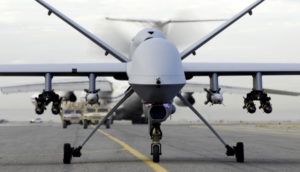
The United States already faces some issues keeping it from gaining traction in artificial intelligence. One is the pushback from Silicon Valley mentioned earlier and the other is Silicon Valley’s lack of interest in helping the public sector. There has always been a disconnect between the private and public sector in regard to technology, so this rift is not helping the United States military receive the best and the brightest in artificial intelligence. The best innovators want to go to Silicon Valley. The United States federal government tends to stifle new, challenging ideas when it comes to advancements in technology. According to Defense Intelligence Agency Director Marine Corps Gen. Vincent R. Stewart in an interview with National Defense Magazine, “we have got to create space for young men and women who have great ideas to be innovative, to be disruptive, to challenge the conventional order, conventional wisdom and do things we have never even thought was possible.” If the Pentagon does not change their ways, they will lose the innovative minds behind artificial intelligence to Silicon Valley, which, ironically is dripping with Chinese investments. Conversely, China does not have the issue of separation between the public and private sectors. According to the New York Times, “Baidu — often called the Google of China and a pioneer in artificial-intelligence-related fields, like speech recognition — this year opened a joint company-government laboratory partly run by academics who once worked on research into Chinese military robots.” With that being said, the Chinese government’s top-down approach of leading that stifles information sharing and limits on ownership of innovative findings may end up hurting the country’s advancement in this field as well.
From an economic perspective, artificial intelligence is getting a small bump in funding with the Trump Administration as opposed to previous years, but will it be enough? According to the Department of Defense, “the FY 2018 President’s Budget Request for S&T is $13.2 billion, which is 2.3 percent of the Department’s ($574.5 billion) base budget. The FY 2018 request is 5.6 percent more than the FY 2017 requested amount of $12.5 billion for continued S&T focus on innovations to sustain and advance DoD’s military dominance for the 21st century.” While the overall defense budget is taking a hit, this small subsidy could mean the difference between China and the United States leading the world into the future of warfare. With China nipping at the heels of America’s military and economic superiority, many think this boost is enough to sustain dominance. In contradiction to that, The New York Times reported, “the Defense Department found that Chinese money has been pouring into American artificial intelligence companies — some of the same ones it had been looking to for future weapons systems.” These investments could mean China is beating the United States to the punch on its home turf. Again, China’s focus on artificial intelligence has yet to yield success, but it will be interesting to follow in the next five or so years to see if power has shifted.
In conclusion, artificial intelligence being implemented in the military will have economic effects both at the domestic and international level. Col. George Haynes closed the interview with, “artificial intelligence is beneficial for the military economically because it allows us to be able to make agile and quick decisions and can provide an advantage to the organization, but unless it is based upon seconds or milliseconds, there will be a strong debate whether artificial intelligence will be able to overcome other collateral and synergistic technologies.” The military needs to evolve with time in order to keep up with international and domestic threats. The economic effects of this evolution are a necessary price to pay in order to be well-equipped to integrate artificial intelligence, also known as the third revolution in warfare behind gunpowder and nuclear weapons. If the United States does progress in this realm, other countries, including China, will.
